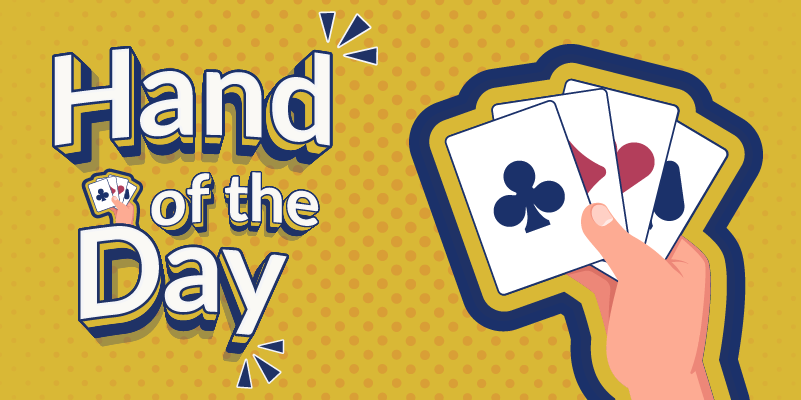



You can now play the hand of the day on BBO+ and compare how you get on with the players in the article.
The Aces On Bridge by Bobby Wolff
Opening Lead: ♦4
Between triumph and abject failure at Board-a-Match scoring is often finer than at any other form of the game. The scoring works like that in pairs but with only two tables in play. You either win or lose the board no matter what the difference in score might be unless the result is an exact tie. In other words, if your opponents make six spades, you win the board for making six no-trump, but lose the board by just the same margin if you miss slam or go down in the grand slam or play six of a minor suit.
In this deal, Al Rand found a way to set a slam contract two tricks when declarer failed to see what was going on.
The bidding had convinced Rand that one of his opponents had a void in clubs, so he led his singleton diamond instead of a top club. Of course a club lead (or even a heart lead, which would have been my choice) makes declarer’s task impossible, but one can understand Rand’s thinking.
Declarer took the diamond lead in dummy and passed the spade nine, which Rand ducked smoothly. Declarer, suspecting nothing, took a second trump finesse, and the roof fell in. Rand took his king and quickly cashed two clubs.
If declarer had read Rand’s mind and gone up with the ace on the second trump lead, he would have taken all 13 tricks. But he wound up with only 10.
Lead with the aces
Answer: ♥ J
Dummy rates to have length in both majors and a weak hand. A trump lead looks sensible as least likely to give away something. A deceptive heart jack might persuade declarer to misplay the suit — and can hardly fool partner dramatically.
This Hand of the Day was originally published on aces.bridgeblogging.com.
You can now play the hand of the day on BBO+ and compare how you get on with the players in the article.



